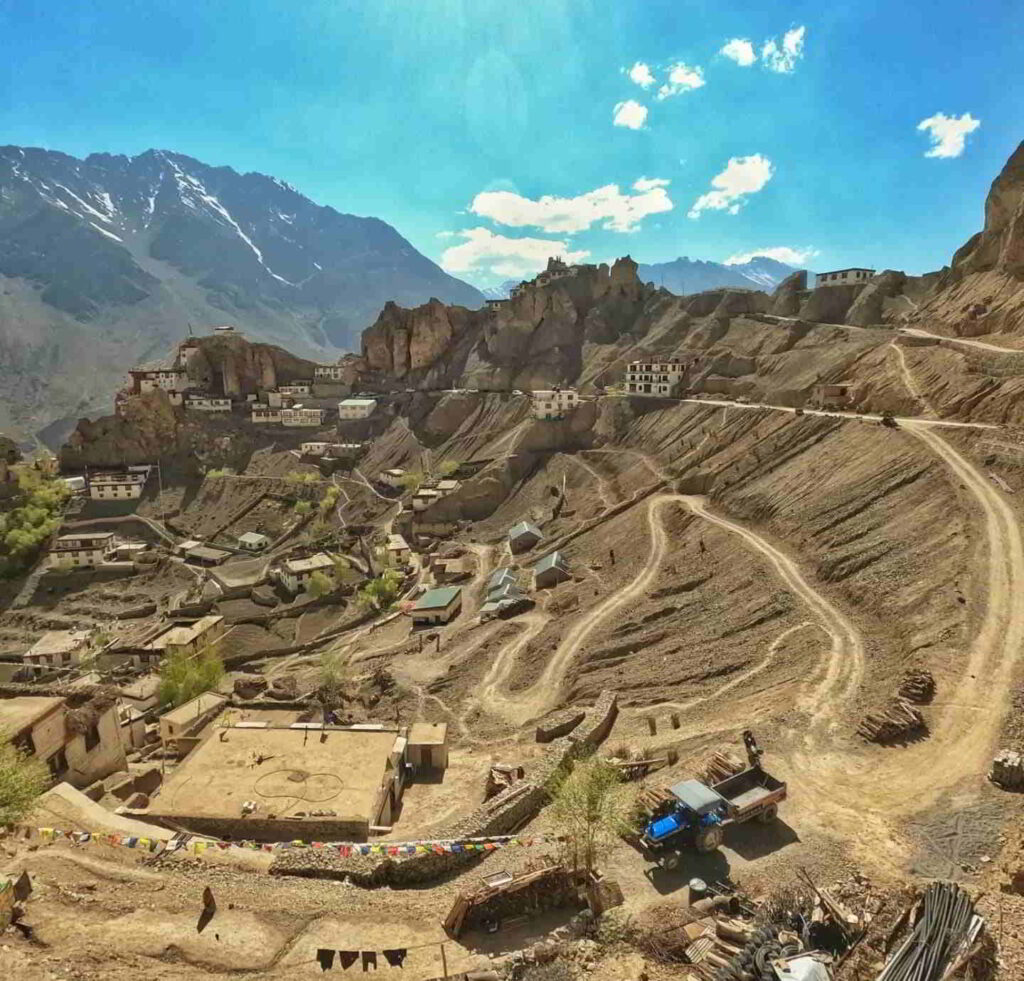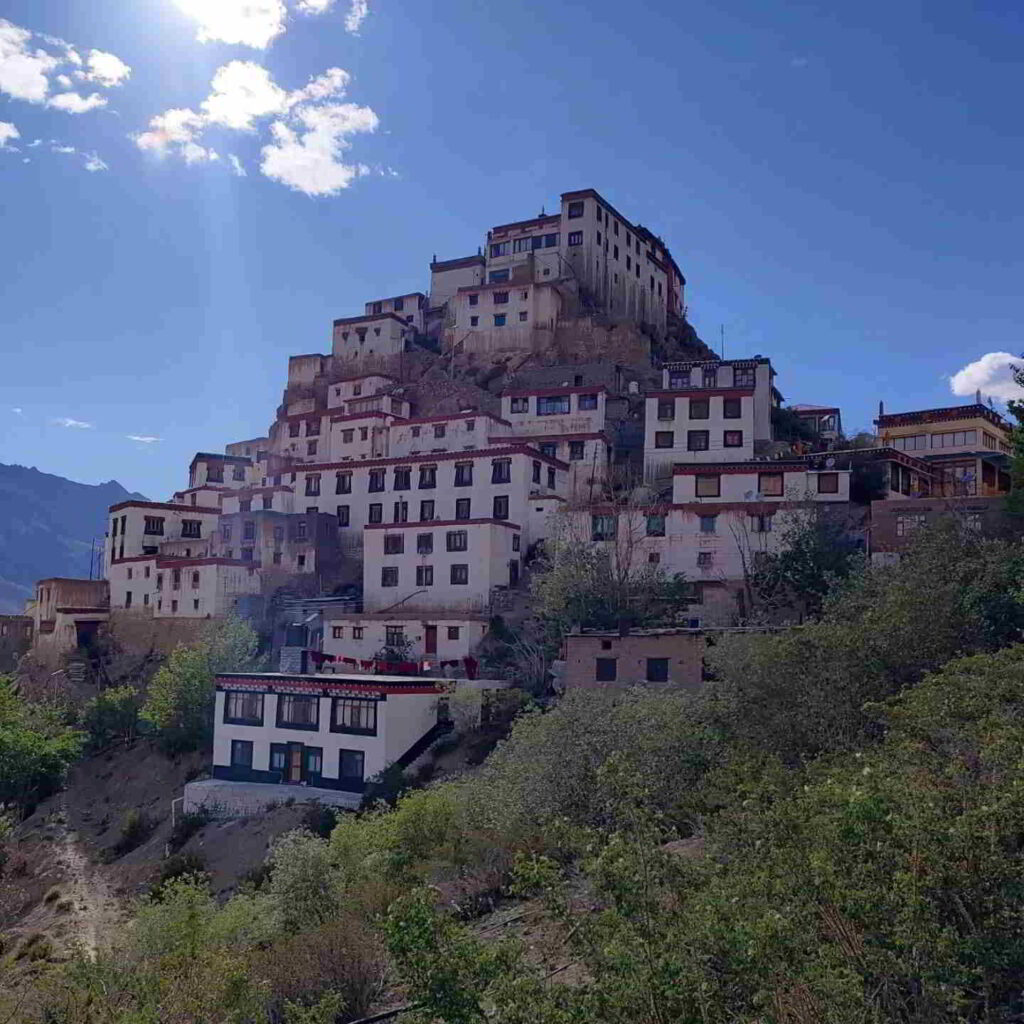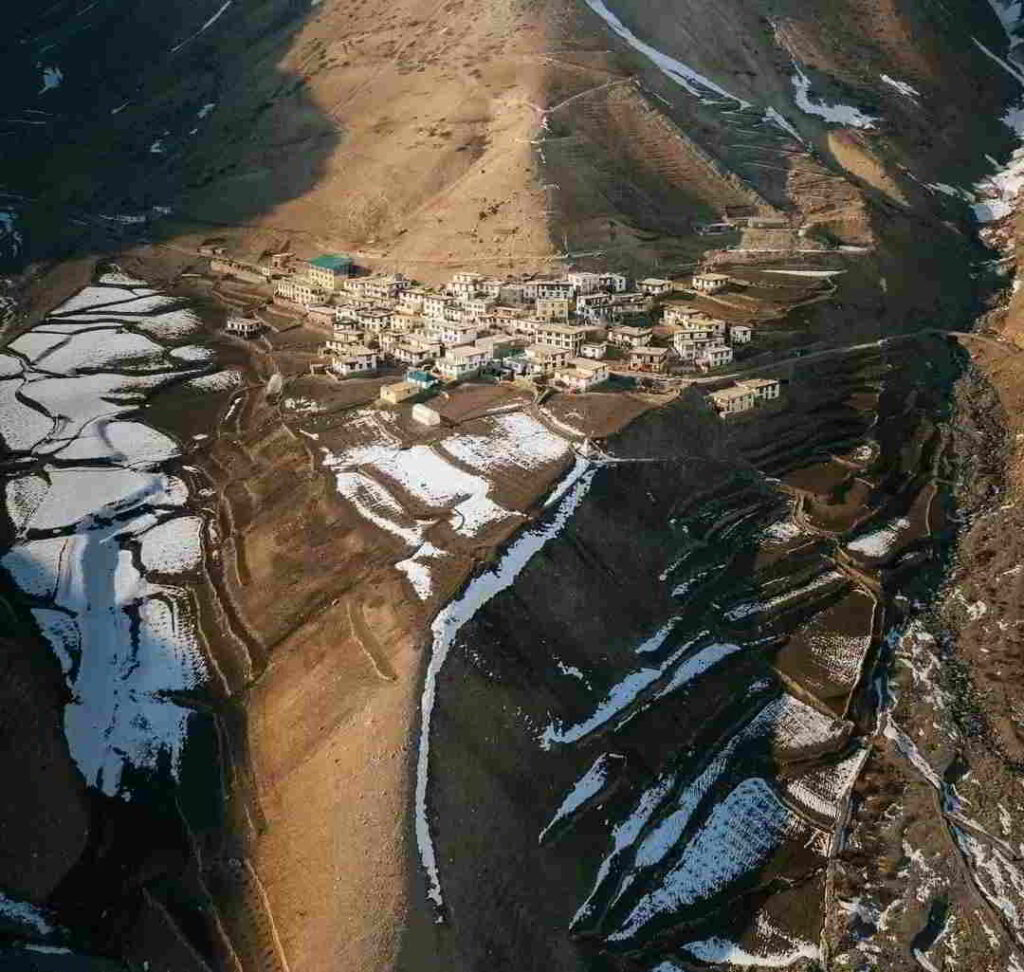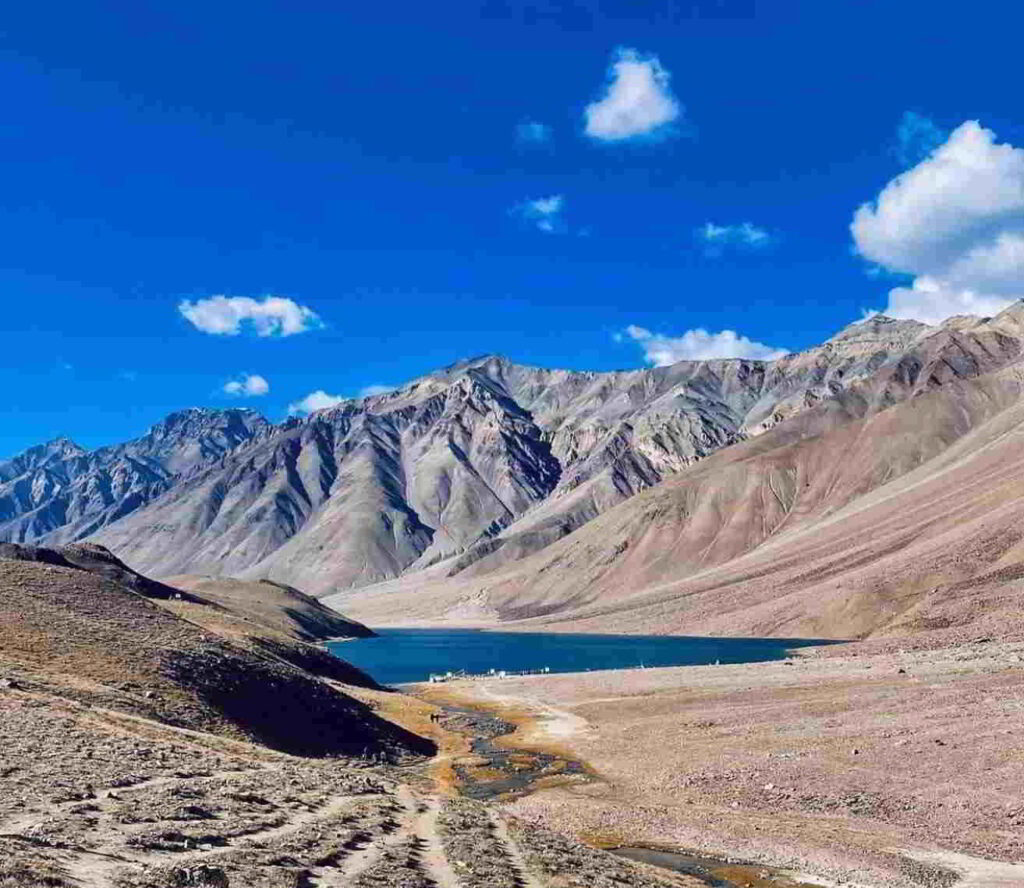
Spiti Valley Tour From Kolkata
How you can Plan Spiti Valley Tour From Kolkata?
If you enjoy admiring nature’s grandeur, you must go to Himachal Pradesh’s gorgeous Spiti Valley. This unique mountainous cold desert in the Himalayan foothills is one of a kind. It’s strewn with greenish spots across vast swaths of golden, weathered soil – the kind of sight that will take your breath away. Windswept lands and calm communities characterise the Spiti. Every feature of this destination exudes a sense of tranquilly. Chitkul, Kalpa, Tabo Village, Pin Valley, Kaza, Hikkim, Komic, Chicham Bridge, Chandratal Lake, Kunzum Pass, and many other notable destinations are included in our Spiti valley tour from Kolkata.
Our Spiti valley tour from Kolkata includes everything you’ll need for a relaxing vacation. As the day passes, sit back and enjoy the breathtakingly beautiful moon lake, an enigmatic jewel of Himachal Pradesh reflecting a variety of hues ranging from reddish-orange to turquoise blue to gleaming green.
From Kolkata, how you reach Spiti Valley?
By Air: Flying to Spiti for a Spiti Valley tour from Kolkata is the most convenient option. The Subhash Chandra Bose International Airport, located in Dumdum, is the closest airport. You can fly directly from Kolkata to Chandigarh or travel via Delhi. However, if you are travelling from Kolkata, we recommend that you travel via Chandigarh, as it will be a more comfortable journey.
- The distance between Chandigarh and Shimla is 107 kilometres, whereas the distance between Delhi and Shimla is 355 kilometres.
- The distance between Chandigarh and Manali is 304 kilometres, whereas the distance between Delhi and Manali is 537 kilometres.
By Rail: Another option is to travel to Kolkata’s Howrah and Sealdah railway stations, which are the city’s two major rail hubs. You can get to Chandigarh or Delhi by train. There are numerous Volvo bus services available from Delhi and Chandigarh to Shimla and Manali.

The following are some of the best spots to see during your Spiti Valley tour from Kolkata:
We have listed some of the most important and well-known sightseeing spots for your Spiti valley tour from Kolkata that you can visit and enjoy during this adventurous trip.
Dhankar Monastery: Dhankar Monastery is a 1200-year-old monastery perched atop a steep ridge. The Gelugpa School of Order constructed it.
Kaza: Kaza is the district capital of Spiti valley. This location is flanked on both sides by mountains and is the most inhabited area of the Spiti valley.
Komic Village: The world’s tallest village, Komic Village, has great road access. It is located at a height of 15000 feet above sea level, 20 kilometres from Kaza.
Kunzum Pass: Kunzum Pass connects Lahaul and Kullu with the Spiti Valley. It stands at an elevation of 4,593 metres above sea level.
Langza village: The town of Langza is located 16 kilometres north of Kaza. Tourists flock to this region for its ancient monasteries, historical structures, and breathtaking nature.
The Pin Valley National Park: In 1987, the Pin Valley was designated as a national park. It is a must-see for all tourists visiting the Spiti Valley, and it is home to a diverse range of flora and fauna.
Tabo Monastery: Tabo Monastery is the oldest monastery in Himachal Pradesh, and it is located in Tabo village, which is a very old community. It is a popular tourist destination and is notable for the Nine Temples of Buddha Maitreya and Tara, as well as the numerous stupas.
Chitkul Village: Chitkul Village is a Himachal Pradesh village in the Kinnaur district. During the winter, the area is usually covered with snow, and the residents relocate to Himachal’s lower districts. Chitkul has the cleanest air in India, according to a recent study by IIT Delhi’s Centre of Atmospheric Sciences.
Key Monastery: The majestic Key Monastery, also known as Kye Gompa, is one of the most popular sights in the Spiti Valley, attracting people from all walks of life. Almost everyone who comes this way visits this spot in the Spiti Valley. It is quite easy to schedule a trip here because of its close proximity to Kaza town. It is also known as the Ki, Kye, or Kee and is the largest monastery in the Spiti Valley.
Chandratal Lake: Chandratal Lake, shaped like a crescent moon, is India’s most picturesque and high-altitude lake. This lake is popular with tourists who want to go camping or hiking.

Best time to visit Spiti Valley Tour from Kolkata
Every year, a large number of tourists want to visit this lovely place and are looking for the best time to do so. The best time to visit the Spiti valley trip from Kolkata is from mid-April to October. The snow in the region begins to melt, and most roads, such as those from Kaza to Losar, reopen, while others, such as those from Kunzum Pass to Manali, remain blocked until the middle of October through the second week of June.
Weather in Spiti Valley:
Spiti is a valley in the Himalayas. Summer weather is always good from April to July, making this the best suitable time to visit Spiti Valley Tour from Kolkata in the region. Summers in the Spiti Valley are ideal for participating in adventurous activities arranged in the valley.
In the middle of June, the Manali-Kaza highway is always open. This is the time of year when you can visit local cultural events and festivals. Summer temperatures in the Spiti Valley average 15 degrees Celsius during the day and 4 to 6 degrees Celsius at night.
Day 1: Chandigarh– Shimla (100 km, 4 hours)
Welcome greetings upon arrival at Chandigarh airport for the start of the Spiti Valley Tour from Kolkata, followed by a drive to Shimla, the historic summer residence of the British Raj to escape the heat of the plains and enjoy amazing views of the Himalayan foothills. Transfer to the hotel upon arrival, enjoy supper, and spend the night in Shimla.
DAY 2: Shimla – Narkanda – Sangla Valley (170 km/07 hours)
After an early breakfast, drive to Sarahan, Himachal Pradesh, which is located at an elevation of 2165 metres and is around 170 kilometres from Shimla. The majesty of Shrikhand Mahadev’s snow top can be viewed, while the Bhima Kali temple is Sarahan’s main attraction. Then we travel to Sangla, a prominent hill town in Himachal Pradesh’s Kinnaur district, near the Tibetan border. Sangla has a cool climate because it is surrounded by forest slopes and mountains in the broader Himalayan range. Check into the hotel, have dinner, and spend the night at the Sangla Hotel.

DAY 3: Sangla Valley – Chitkul – Kalpa (60 Km /04 Hrs)
After breakfast, drive to Chitkul hamlet, the last inhabited village on the Indo-Tibetan border along the banks of the Baspa River. During the winter, this Chitkul village is almost completely blanketed in snow. Chitkul’s main attractions are its houses, which feature slate or wooden plank roofs. Kagyupa Temple is a monastery where an ancient image of Shakyamuni Buddha is revered. With glimpses of snow-capped mountains, apple orchards, and wooden buildings, this valley provides a stunning view of the Baspa river. If desired, lunch can be ordered at the “Hindustan Ka Akhri Dhaba” in Chitkul Village.
After that, drive towards Kalpa, passing by Reckong Peo on the way. Kalpa is a lovely village from which to view Mt. Kinner Kailash’s changing colours. Arrived in the evening, checked into the hotel, had dinner, and spent the night at the Kalpa hotel.
Day 4 Kalpa – Nako – Tabo Village (162 Kms/ 07 Hrs)
After breakfast, proceed to Nako. You’ll be travelling along the Indo-Tiber Highway and passing through the Khab bridge, which marks the confluence of the Spiti and Satluj Rivers. After a brief break at Nako Lake for lunch, you will immediately reach the Spiti Valley as soon as you cross Sumdo. Visit the 500-Year-Old Mummy in Gue Village by turning right through the gate 3 kilometres after Sumdo.
After that, we’ll head to Tabo Village. Tabo is a historic hamlet on the Spiti River’s left bank. It is the location of one of Tibet’s most famous Buddhist monasteries, second only to the Tholing Gompa. It’s also known as the Himalayan Ajanta. Tabo has the oldest caves on barren hillsides, as well as Thanka murals, which are among Buddhism’s most valuable paintings. Check in to Tabo Hotel in the evening for an overnight stay.
Day 5: Tabo – Dhankar Monastery – Pin Valley (90 km/05 hours)
We will visit the Tabo Monastery and explore the Tabo Village this morning. Travel to Dhankar village, the valley’s oldest capital, afterwards. The Dhankar Monastery is the village’s most well-known attraction.
After lunch, visit Pin Valley, which is home to the Snow Leopard and Siberian Ibex. On your journey to Pin Valley, stop by Khungri Monastery in Sagnam, which is the stronghold of the Nyingma sect of Buddhism’s Buchen Lamas. Finish your day’s travel at Mudh village, which serves as the entrance to Pin Valley National Park.
Stay in a Mudh homestay to learn about native life at this altitude, including how they live, what they grow, what they eat, how they occupy themselves, their culture, and gastronomy.
Day 6: Pin Valley-Kaza-Key Monastery-Kibber-Kaza (95 km, 5 hours)
We have a full day of sightseeing planned for today. We’ll travel 12 kilometres from Kaza to the world-famous Key Monastery after breakfast. Enjoy a cup of tea with the monks and gain a better understanding of their lives. The Kye Monastery is the largest monastery in the Spiti Valley, and it is home to young monks who have come to follow Buddha’s path.
Then we’ll see Chicham Bridge, Asia’s highest bridge. We travel to Kibber, a little lovely settlement in the Spiti Valley, after exploring the Chicham Bridge. The village is located at a height of around 14200 feet. The Snow Leopard Tour in Kibber Village is well-known. Tourists go to the area to see the same houses nestled among the majestic Himalayas. The apartments are not just uniform, but they also have a Tibetan architectural feel to them.
After this, we’ll return to Kaza in the evening and spend the night there.

Day 7: Kaza – Hikkim – Komik – Langza – Kaza (70 kms, 4 hrs)
After breakfast today, we’ll travel to Hikkim Village, which is home to the world’s highest post office and polling station. You can mail yourself a letter at the post office to commemorate your trip to Spiti.
From Hikkim, we’ll head to Langza. It’s famous for its massive Buddha Statue, which adds to the beauty of the Spiti Valley. The distance between Kaza and this location is 16 kilometres.
The Komic Settlement, which stands at a height of 15,027 feet and is the world’s tallest village, is another place to visit. The Tangyud Monastery, which was intended to resemble a fortified castle and boasts large slanted mud walls and battlements, is a renowned tourist site.
We’ll return to Kaza in the evening and spend the night there.
Day 8: Kaza to Nako (111 Km, 6 Hrs)
We’ll return to Nako today, which is about a 6-hour trip from Kaza. You’ll get to see the route’s mesmerizingly magnificent scenery and enjoy lunch in the www.spitiadventure.com midst of it all.
Himachal Pradesh is stunning. You’ll eat your dinner there and spend the night there as well.
Day 9 – Nako – Sarahan (170 Km, 7 Hrs)
We will leave our hotel after breakfast and begin our journey to Sarahan. Sarahan is known for the Shri Bhimakali Temple, which is devoted to the mother goddess Bhimakali, the ruling deity of the Rulers of the old Bushahr State and is located at a height of 2150 metres. Sarahan is a small township on the left bank of the Sutlej, at an elevation of 1,005 metres. This township is well connected to main trade routes that link Indian markets to those in Central Asia and Tibet. Staying in a hotel in Sarahan for the night.

Day 10 – Sarahan – Kufri (160 Km, 5 Hrs)
We’ll leave after breakfast towards Kufri. We’ll arrive in Kufri in the afternoon. Arrive at the hotel and check in. In the evening, you can go sightseeing in Kufri. In Kufri, spend the night in a hotel.
Day 11 – Kufri to Chandigarh (130 Km, 5 Hrs)
Our Spiti Tour comes to a close today. We’ll leave Kufri after breakfast, depending on your Chandigarh flight. We’ll drop you off at the Chandigarh Airport or the Chandigarh Railway Station. Our Spiti valley excursion comes to a close here, leaving us with many memories.
